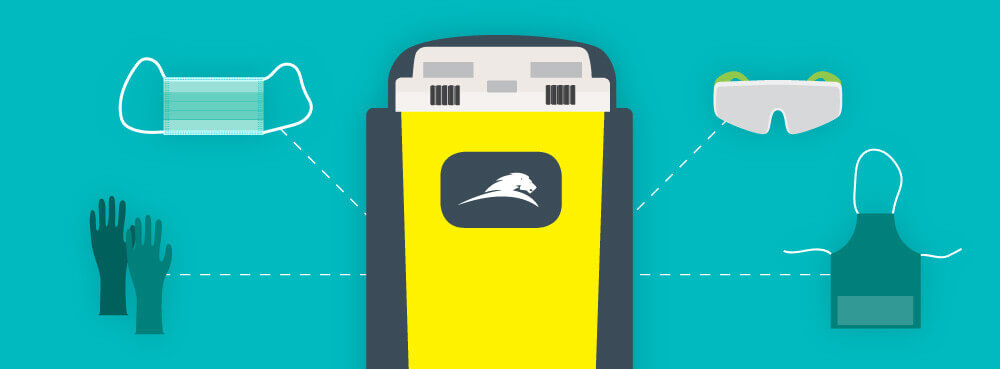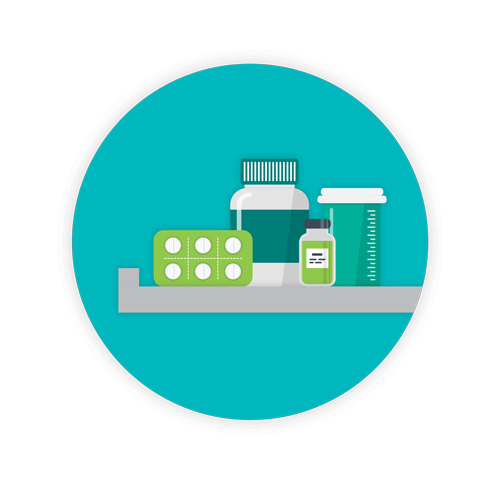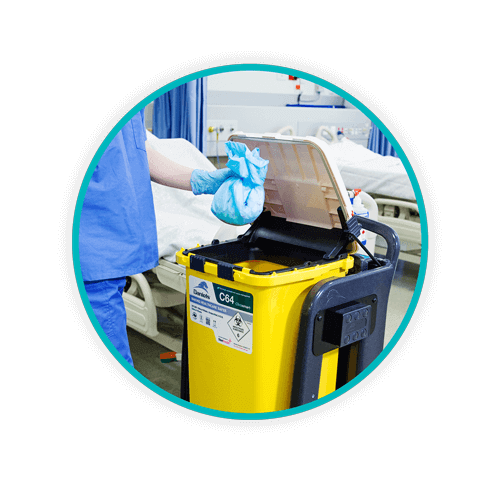USP <800> Compliance Guide: Everything You Need to Know

Proper handling of hazardous drugs is crucial in the healthcare industry to protect healthcare workers, patients and the environment. USP <800> guidelines provide comprehensive standards for the safe handling of hazardous drugs in healthcare settings. This guide will walk you through the fundamentals of USP <800> compliance, including key requirements, tips, and supplies needed to meet USP <800> standards.
Did you know that “about 8 million U.S. healthcare workers are potentially exposed to hazardous drugs, including pharmacy and nursing personnel, physicians, operating room personnel, environmental services workers, workers in research laboratories, veterinary care workers, and shipping and receiving personnel?”1
That’s a lot of lives that could be negatively affected if the proper safety measures aren’t put into place. USP <800> was put into place to protect healthcare workers because patient safety and employee safety have to go together.
This guide will cover:
What does “USP” stand for?
So, what is USP <800>?
USP stands for United States Pharmacopeia, and USP <800> is a regulatory standard aimed at minimizing exposure to hazardous drugs in healthcare settings. It outlines best practices for handling, storing and disposing of hazardous drugs to ensure worker and patient safety.
The inaugural United States Pharmacopeia (USP) was created by a group of American Physicians in 1820. This was the next phase of the “drug book.” The USP outlined formulas for over 200 drugs “considered to be the ‘most fully established and best understood.’”2 Time passed and eventually the Food and Drug act came along in 1906 – this added another level of authority to USP. Now, with public involvement and clear-intentions, scientific experts volunteer to create and establish these new USP standards. For deeper look at the origins of USP’s history, view their site here.
As our knowledge evolves, so do our standards of safety—and this is where USP <800> comes in.
What Are USP <800> Standards Intended to Do?
The primary goals of USP <800> standards are to:
By following USP <800> requirements, healthcare facilities can create a safer working environment while ensuring compliance with federal safety regulations.
Which Facilities Need to Meet USP <800> Standards?
Any healthcare facility that handles hazardous drugs, as defined by NIOSH, must adhere to USP <800> standards. These hazardous drugs include antineoplastic, non-antineoplastic and those with adverse health effects, requiring stringent handling procedures to ensure safety and compliance.
Compliance with USP <800> guidelines is particularly crucial for:
What are antineoplastic drugs?
According the CDC, “Antineoplastic drugs are medications used to treat cancer. Antineoplastic drugs are also called anticancer, chemotherapy, chemo, cytotoxic, or hazardous drugs.”3 You can view NIOSH’s full List of Antineoplastic or other Hazardous Drugs in Healthcare Settings here. You can also download a list we put together for you based on NIOSH’s information:
These types of drugs are known to cause adverse health effects – which is why USP <800> is implementing a standard for safer handling. Mishandling of Hazardous Drugs can lead to damage in major organs and cause reproductive challenges.
The Importance of Complying with USP <800> Requirements
Non-compliance with USP 800 guidelines can lead to severe consequences, including:
- Increased risk of exposure to hazardous drugs.
- Regulatory fines and legal penalties.
- Potential health hazards for healthcare workers.
- Damage to the facility’s reputation.
By following the USP <800> requirements, healthcare facilities can create a safer environment and avoid costly compliance violations.
Poster: Understanding USP <800>
Who does this impact in healthcare and what do they need to do?
USP <800> impacts everyone in healthcare – anyone who may potentially handle a hazardous drug. Essentially, USP <800> sets the framework for creating standard operating procedures for each facility for how they need to handle these drugs. The main takeaway is that your facility should develop a safe plan and train their staff on how to handle and package USP <800> drugs.
When is PPE required according to USP <800> guidelines?

You must wear PPE, including double gloves, when handling these hazardous drugs. Two pairs of chemotherapy gloves are required for administering antineoplastic hazardous drugs (HDs). Reference your site’s occupational safety plan. Your facility is responsible for training you and your colleagues on the appropriate PPE to wear and safe handling methods.
Appropriate PPE must be worn when handling HDs including during:
- Receipt
- Storage
- Transport
- Compounding (sterile and nonsterile)
- Administration
- Deactivation/decontamination, cleaning, and disinfecting
- Spill Control
- Waste Disposal
In section 9 of Managing Hazardous Drug Exposures: Information for Healthcare Settings, it is specified that all containers of hazardous drugs must be properly identified. This identification includes labeling, tagging, or marking the containers with both the identity of the material and appropriate hazard warnings. This labeling practice ensures that healthcare workers can easily recognize hazardous drugs and take necessary precautions when handling them.
Moreover, OSHA states that “HDs and contaminated materials should be disposed of in accordance with federal, state, and local laws.” So while USP <800> is not enforced by RCRA, it is the new standard of safety that all sites need to adopt to protect their staff.”
Daniels Health has an entire guide on USP 800 and PPE. Our five-page instructional guide outlines PPE and Engineering controls for working with NIOSH Hazardous Drugs in healthcare settings.
What other training can help a staff stay compliant with USP <800> regulations?
Global Harmonized System training is a great place to start, and this is something that Daniels offers with their Compliance Program. This ensures staff can quickly read and understand hazard pictograms and the labeling of chemicals. Staff must also have an SDS for each hazardous chemical they use – a SDS database is also available in Daniels’ compliance program.
The Chemosmart Container is a Cost-Effective and Compliant Solution for USP <800> Items and PPE
Many of the items on the HD list are chemotherapy drugs. Anything that is trace has less than 3% volume of the original material and is no longer regulated by RCRA. So that’s why those can go in the Chemosmart.
Again, this is the best recommended practice by Daniels but ultimately the site’s decision. The PPE used could also have trace amounts on it. It is simpler to discard all PPE as trace. Disposing of items in the Chemosmart would be more cost-effective than over-classifying the items and putting them in a black bin.

Poster: Understanding USP <800>
Helpful Resources For USP <800> Standards
Featured USP <800> Resources:
- Understanding the USP 800 Standard
- NIOSH Antineoplastic Hazardous Drug List
- USP <800> Personal Protective Equipment
- Daniels USP <800> System
We also have an entire webpage dedicated to USP <800> with all the resources and our recommended solutions.
Daniels Health: Your Partner in USP <800> Compliance
At Daniels Health, we provide comprehensive solutions to help healthcare facilities achieve USP 800 compliance, offering:
- Expert consultation on USP 800 standards and compliance strategies.
- Supplies to meet USP 800 standards, including Chemosmart containers.
- Cost-effective, USP 800-compliant disposal solutions for hazardous drugs.
- Educational resources to support facility compliance efforts.
Contact us today to learn more about how Daniels Health can help your facility meet USP 800 requirements with innovative solutions.
Resources
¹ Centers for Disease Control and Prevention Hazardous Drug Exposures in Healthcare. 2018
2 Global Health. “What is Pharmacopeia?”. USP. 2014
3Centers for Disease Control and Prevention Reproductive Health and the Workplace. 2019
Let's Talk!
Your time is valuable, and we don’t want to play hard to get. You can either phone us directly on the details listed on our contact page, or feel free to fill out this short form and one of our team members will get back to you as quickly as possible.
